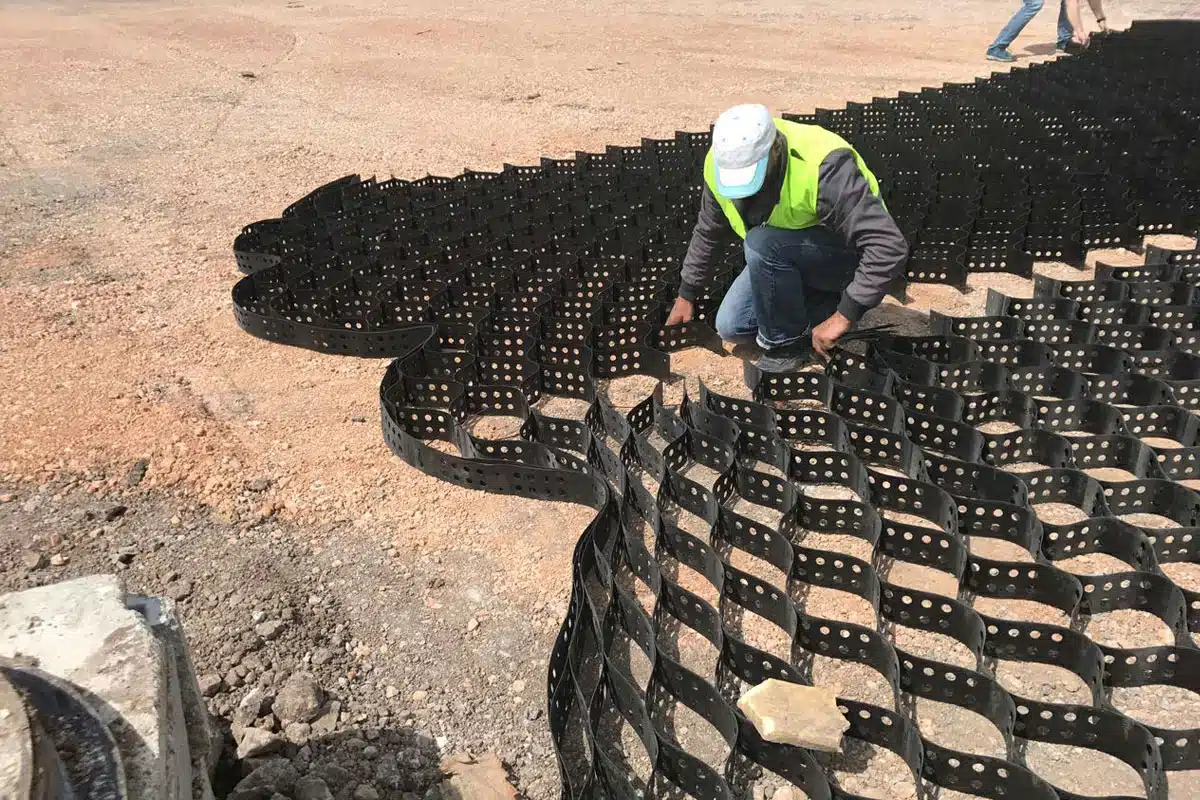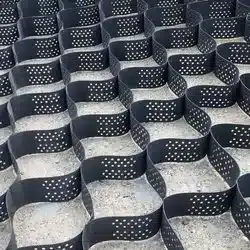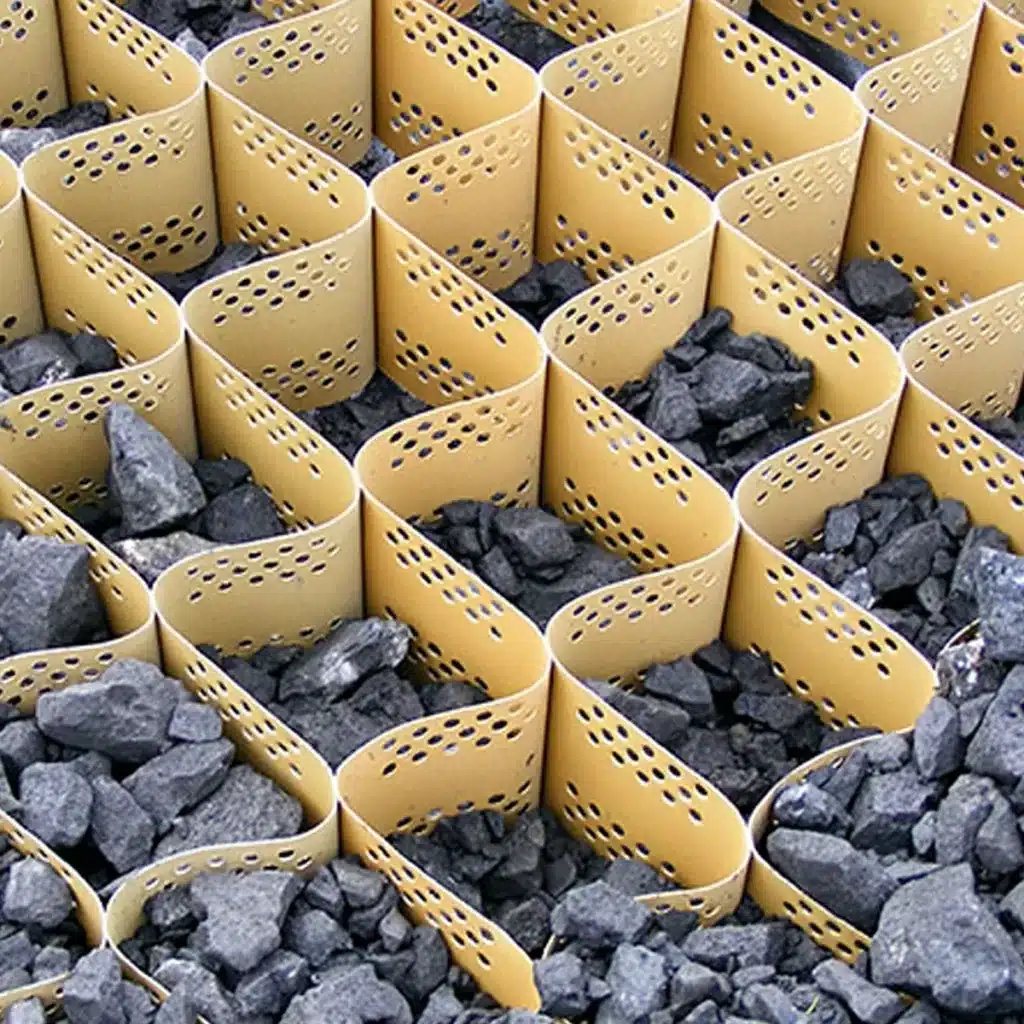+86-159 9860 6917
info@geofantex.com
geofantex@gmail.com
+86-400-8266163-44899
In the quest for sustainable and durable construction and landscaping solutions, the debate between using geocell and hard plastic materials has become increasingly relevant. Both materials offer unique benefits for soil stabilization and reinforcement, but understanding their differences, applications, and properties is crucial for making informed decisions. This article delves into the core of geocell and hard plastic, exploring their definitions, differences, properties, and uses to shed light on which material might be the best fit for specific projects.

What is Geocell Plastic?
Geocell is a type of geosynthetic material crafted from high-density polyethylene (HDPE), polyester, or other polymeric alloys, known for its innovative design. It features a three-dimensional honeycomb-like structure, essentially acting as compartmental containers that can be used as a load transfer platform. These compartments can be filled with a variety of materials, including soil, sand, gravel, or concrete, to suit different project needs. This unique configuration not only enhances load distribution but also ensures the material’s high durability and flexibility. Primarily, geocell technology is employed for soil stabilization, erosion control, and to significantly improve the load-bearing capacity of various grounds, making it a versatile solution in the field of geotechnical engineering.
What is the Difference Between Geocell and Geogrid?
Although both geocell and geogrid are utilized in similar applications, their structure and functionality exhibit significant differences. The geocell is a deep, three-dimensional mesh structure, providing a unique form of confinement that promotes vertical load distribution and stability. On the other hand, the geogrid is typically two-dimensional, more linear and grid-like, and is designed to reinforce soils by offering tensile strength and reducing lateral movement. This fundamental structural distinction means that geogrids excel in reinforcement roles, whereas geocells are superior for stabilization and erosion prevention tasks. Consequently, these technologies are not direct competitors but rather complementary solutions in the field of geotechnical engineering.

What are the Properties of Geocell Material?
Geocell materials are celebrated for their distinctive properties, making them highly versatile for a myriad of applications. These properties encompass:
- High Durability: They exhibit resistance to physical wear, chemical degradation, and extreme weather conditions, ensuring longevity in their applications.
- Flexibility: Geocell can be expanded or contracted to seamlessly fit the diverse shapes and contours of any landscape, offering unparalleled adaptability.
- Permeability: The material allows for efficient water drainage, preventing waterlogging and fostering plant growth in landscaping projects, thereby maintaining the natural balance.
- Load Distribution: It significantly enhances the load-bearing capacity of the soil, effectively reducing pressure on underlying layers and ensuring structural stability.
- Environmentally Friendly: Geocell materials are often crafted from recycled materials and are themselves recyclable, minimizing their environmental footprint.
- Excellent Insulation Values: With a lambda value of 0.08 w/mK, geocell materials also offer superior insulation properties, contributing to energy efficiency in various applications where thermal performance is crucial.
This comprehensive set of properties not only underscores the utility of geocell materials in a wide range of scenarios but also highlights their contribution to sustainable and efficient construction and landscaping practices.
Where is Geocell Used?
Geocell is utilized across a broad spectrum of fields, attributed to its adaptability and efficiency. Its applications are diverse, encompassing:
- Road Construction: It plays a crucial role in stabilizing the base of roads and pavements, particularly in areas plagued by weak soils, ensuring a durable and stable surface for transportation.
- Erosion Control: Geocell is instrumental in construction for erosion control on slopes and embankments, effectively preventing soil erosion caused by water or wind, thereby preserving the natural landscape.
- Soil Stabilization: On both flat ground and steep slopes, it provides a solid foundation, preventing soil displacement and promoting environmental conservation.
- Channel Protection: It is used to safeguard irrigation channels and drainage systems, preventing erosion and sediment accumulation that could impede water flow.
- Landscaping: Geocell contributes to creating stable and durable pathways, terraces, and retaining walls in gardens and parks, enhancing aesthetic appeal while ensuring safety and longevity.
- Agriculture: In agricultural settings, it reinforces the soil in farmlands and around irrigation channels, optimizing water usage and crop production.
Structural Reinforcement for Load Support and Earth Retention: In civil engineering projects, such as airports, military roads, and parking lots, geocell technology provides essential support, ensuring ground stability under heavy loads and in critical infrastructure.
This wide-ranging application of geocell technology underscores its significance in not only enhancing structural integrity and stability but also in contributing to sustainable environmental practices.
The choice between geocell and hard plastic materials for ground reinforcement and stabilization depends on the specific requirements of the project, including the type of soil, the expected load, environmental conditions, and the desired longevity of the solution. Geocell, with its unique honeycomb structure, offers unparalleled flexibility, durability, and environmental benefits, making it a preferred choice for a wide range of applications from erosion control to civil engineering projects. Understanding the properties and uses of geocell can help professionals and enthusiasts alike make informed decisions, ensuring the longevity and sustainability of their construction and landscaping endeavors.



Get Free Sample
We’ll respond as soon as possible(within 12 hours)






















